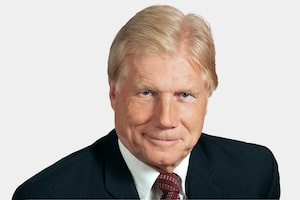In the wake of the NDP leadership convention, party unity problems were anticipated. There would be a gulf between party traditionalists, those echoing Ed Broadbent's sentiments, and those supporting the perceived move to the centre of Thomas Mulcair.
Thus far, it's quiet. Good poll numbers tend to soften frictions and New Democrats are now tied with the governing Conservatives, who are embroiled in allegations of electoral fraud as well as other controversies.
To be considered also is that Mr. Mulcair isn't offering anything that should embitter large numbers of New Democrats. He is only following the historic trend line of the Canadian left. From its early days a century ago, when it favoured the overthrow of the capitalist system, the movement has made steps in a moderate direction. Leaders like Mr. Broadbent, who initially supported the party's radical Waffle wing, were no exceptions. Nor was Jack Layton.
One of the reasons Mr. Layton did well in the 2011 election was his positioning of the party near the centre. Writing in The Canadian Election of 2011, Saskatchewan academic David McGrane notes that that "Under Layton's leadership, more traditional social democratic positions, such as increased taxation of wealthy individuals (i.e. an inheritance tax), the acceptance of deficit spending, the rapid creation of new universal social programs, and references to expanding public ownership were gradually eliminated from the party's discourse."
Mr. McGrane notes that in the campaign, the differences between the NDP and the Liberals were slight on such issues as cap-and-trade, health care, budget-balancing, child care, education, criminal justice, limiting prime ministerial power and a range of other platform proposals.
While the NDP convention of 1999 rejected the middle way or "Third Way," as it was called, of Tony Blair's British Labour Party, Mr. McGrane's study concludes that Mr. Layton moved the party slowly in that direction. For example, his campaign included promises not normally associated with the NDP, such as aid to small business, increased military spending for shipbuilding and fighting crime with more police officers.
It's a party that has come a long, mushy way. Early political formations like the Socialist Party of Canada would have scoffed at today's so-called social democrats. Ian McKay's book Rebels, Reds, Radicals, reminds us of the prominent role the Communist Party of Canada played in the building of industrial unions and of the left generally through the period 1917 to 1937. While the majority on the left did not embrace Leninism, CPC leader Tim Buck had such a following that, upon release from prison, Maple Leaf Gardens overflowed with supporters in a rally to greet him.
The Co-operative Commonwealth Federation became the leading left-side force in the 1930s. Some of its ambitions, as contained in the Regina Manifesto, would have NDPers running for cover today. So would, with its advocacy of comprehensive and systematic state planning, the 1940s bible of the left – David Lewis and F.R. Scott's Make This Your Canada.
As NDP leader, David Lewis scaled down the rhetoric and the ambitions, as did Mr. Broadbent. The Waffle Movement of the 1960s tried to rekindle the spirit of old in advocating an independent socialist Canada but was turned back. Mr. Broadbent helped organize the Waffle and favoured its overall agenda, but its rhetoric was too hot and he dropped it. "We disagreed on style, not on substance," he told biographer Judy Steed.
In Mr. McKay's analysis, the NDP, unlike earlier left-side parties, gradually became deeply implicated in the liberal order. Its radicals have been left to bark on the sidelines. Political pragmatism has taken over and, given the enhanced potential for power that such pragmatism brings, New Democrats don't seem to mind.
 Lawrence Martin
Lawrence Martin